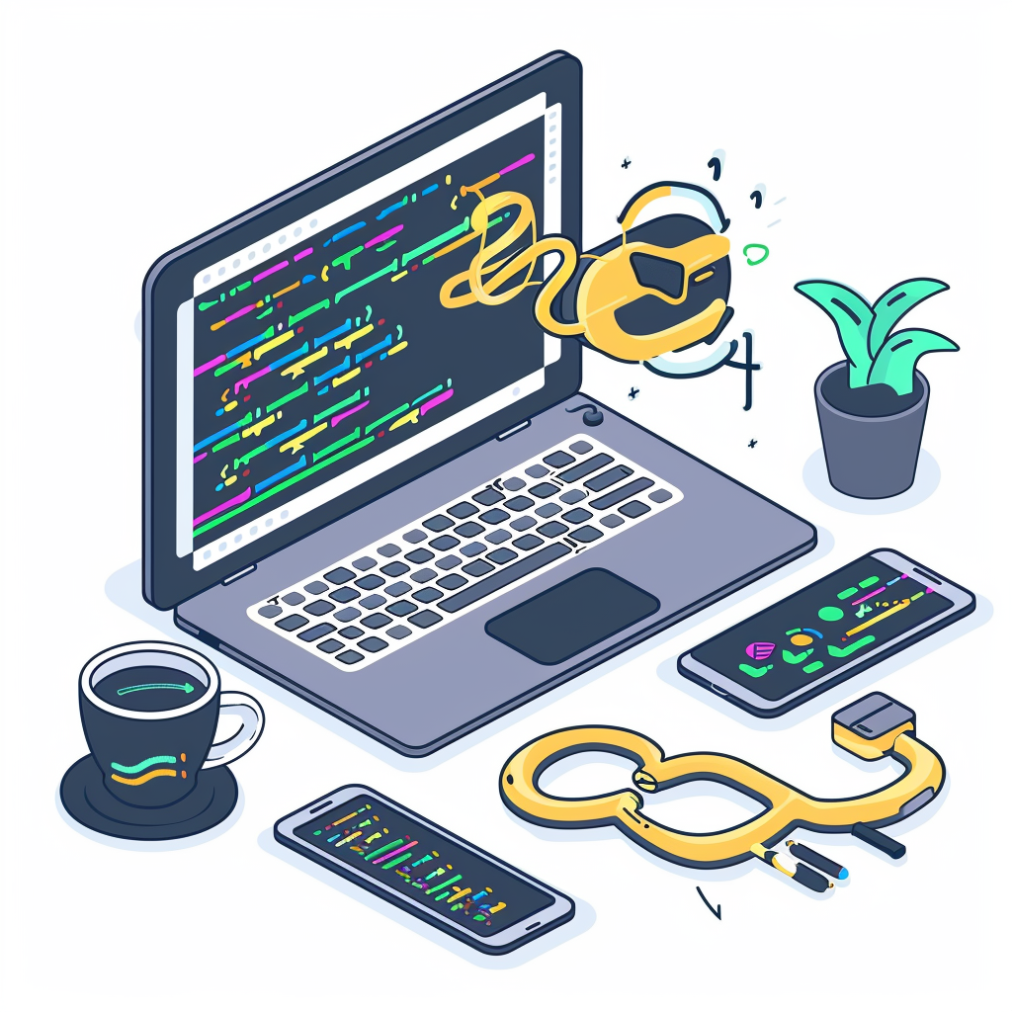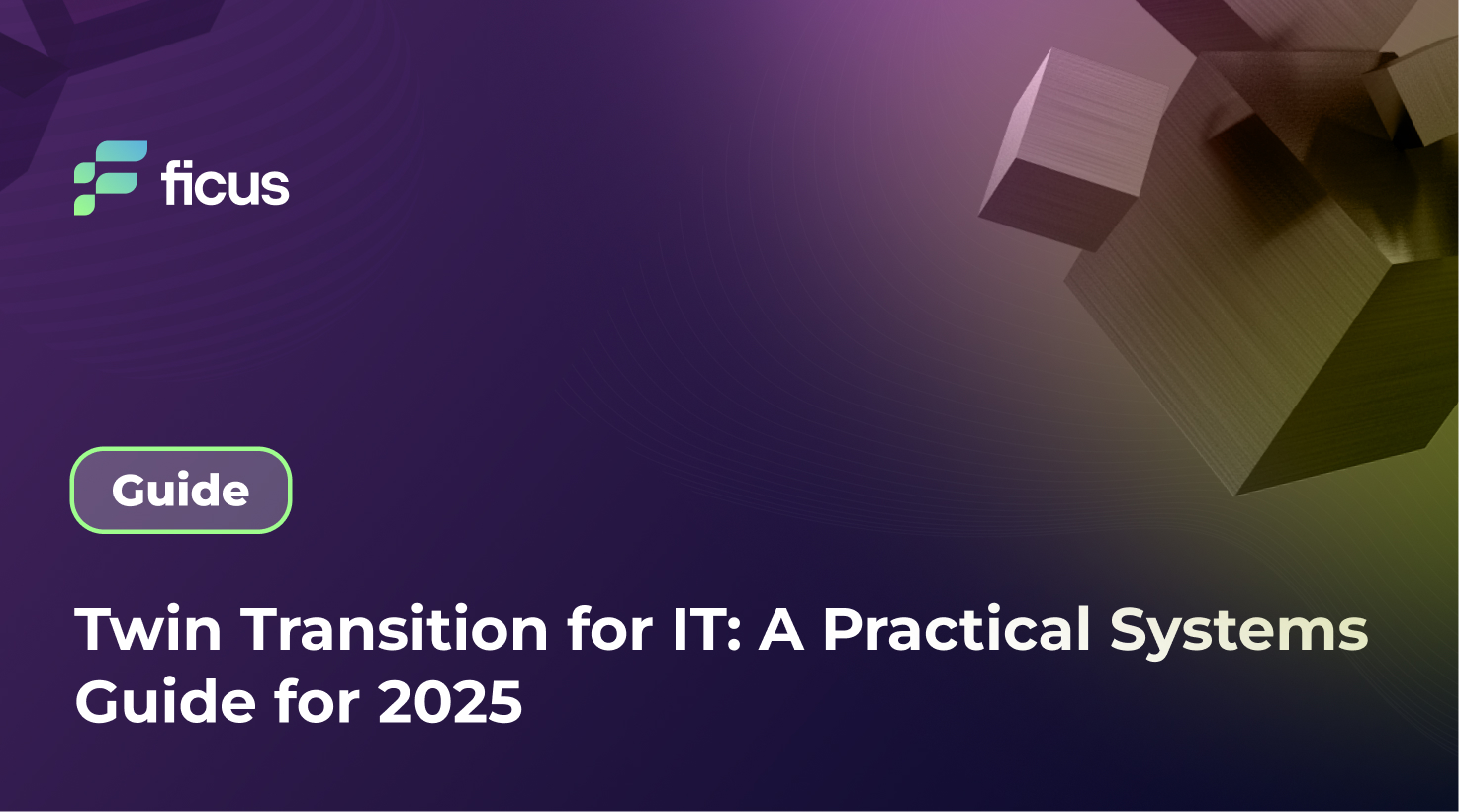Python continues to dominate the programming landscape in 2024, reinforcing its position as one of the most versatile and powerful programming languages. Its relevance spans across industries, from finance to healthcare, due to its simplicity, readability, and extensive support from the global developer community. But what truly elevates Python’s stature in the tech world is its rich ecosystem of libraries. For businesses, understanding and utilizing the right Python libraries is crucial for staying competitive, as these libraries offer tools that can drive innovation, optimize operations, and enhance decision-making processes.
In today’s fast-paced digital era, businesses must be agile and data-driven. Python libraries are designed to address specific needs—whether it’s data analysis, machine learning, web development, or automation. By leveraging these libraries, businesses can easily streamline complex tasks, improve efficiency, and accelerate the development of cutting-edge applications. Choosing the right Python library can also lead to significant cost savings and help companies stay ahead of the curve by adopting the latest technologies, making it easier to build robust applications that can scale with the growth of the business.
- Python libraries boost efficiency across multiple application areas.
- Essential for advancing in data science machine learning fields.
- Python’s adaptability ensures its future relevance and utility.
What is a Library?
In the context of software development, a library is a collection of pre-written code that developers can use to perform common tasks without having to write the code from scratch. These libraries are designed to be reusable, providing functions, classes, and modules that can be integrated into larger programs. Python libraries, in particular, offer a wide range of functionalities, from handling data processing to building complex machine learning models, making it easier for developers to focus on the unique aspects of their applications.
Python libraries simplify complex tasks by offering pre-built modules and functions that can be easily integrated into a developer’s codebase. For instance, a library like NumPy provides powerful tools for numerical computing, allowing programmers to perform operations on large datasets with minimal code. Similarly, libraries like Pandas simplify data manipulation, while TensorFlow and Keras offer high-level abstractions for building and training neural networks. By using these libraries, developers can save time and effort, reduce errors, and focus on building the core features of their applications, ultimately leading to faster and more efficient development cycles.
What is a Python Library?
A Python library is a collection of modules and packages that are bundled together to provide specific functionalities. These libraries play a crucial role in the Python ecosystem, making it easier for developers to implement complex features without reinventing the wheel. Whether you’re dealing with data processing, machine learning, web development, or any other field, Python libraries offer pre-written code that can be seamlessly integrated into your projects. This not only speeds up development but also ensures that your applications are built on reliable, tested code.
Python’s extensive repository of libraries, hosted on platforms like PyPI (Python Package Index), is one of the main reasons for its widespread adoption. With libraries covering nearly every aspect of software development, Python empowers developers and businesses to build sophisticated applications with minimal effort.
How Python libraries are used to extend Python’s functionality for various business applications
Python libraries significantly extend the core functionality of Python, making it one of the most versatile programming languages available. Businesses across industries rely on these libraries to perform tasks ranging from simple data manipulation to building complex machine learning models. For instance, libraries like Pandas and NumPy are essential for data analysis and scientific computing, allowing businesses to process large datasets with ease. For web development, libraries such as Django and Flask provide robust frameworks that simplify the creation of scalable, secure web applications.
Moreover, in the realm of machine learning and artificial intelligence, libraries like TensorFlow, Keras, and Scikit-learn are indispensable. They offer pre-built tools for training models, processing data, and deploying AI-driven applications, which are critical for businesses looking to integrate intelligent systems into their operations. By utilizing these libraries, businesses can enhance their capabilities, innovate faster, and remain competitive in a rapidly evolving digital landscape.
For additional insights on leveraging Python in various fields, consider exploring these valuable resources:
- Learn how Python can streamline DevOps processes in this guide.
- Discover why Python is a top choice for machine learning with this informative article.
- Explore the top Python frameworks for web app development in our overview.
These articles provide a broader perspective on Python’s applications and advantages, helping you make the most of this powerful language.

How to Create Python Libraries?
Creating a Python library from scratch is a valuable skill that allows developers to package their code in a reusable and shareable format. The process begins with identifying a specific problem or functionality that your library will address. Once the purpose is clear, you start by writing Python modules—these are individual Python files that contain functions, classes, and variables.
A basic Python library usually consists of multiple modules that work together to provide a cohesive set of functionalities. It’s important to start with a clear plan, ensuring that your library is both modular and easy to extend in the future.
Writing and Organizing Code
When creating a Python library, following best practices for writing and organizing code is crucial for ensuring that your library is efficient, maintainable, and easy to use. Start by structuring your code into logical modules, each responsible for a specific piece of functionality. Use descriptive names for your modules and functions to make the library intuitive for other developers.
It’s also important to include comprehensive documentation within your code. This includes docstrings for functions and classes, as well as a README file that explains how to install and use the library. Keeping your code clean, well-commented, and properly documented not only makes it easier for others to use but also simplifies maintenance and updates in the future.
Packaging and Distribution
Once your library is ready, the next step is to package it for distribution. Packaging involves bundling your Python modules along with metadata that describes the library, such as its name, version, author, and dependencies. Python provides a tool called setup tools to simplify this process. You’ll need to create a setup.py file in your project’s root directory, which will contain all the necessary information for packaging your library.
After packaging, you can distribute your library by uploading it to PyPI (Python Package Index), making it available to the wider Python community. This allows other developers to easily install your library using pip, Python’s package installer. Proper packaging and distribution ensure that your library can be seamlessly integrated into other projects, encouraging adoption and collaboration within the developer community.
Programming is not about what you know; it’s about what you can figure out.
Chris Pine
How to Choose a Python Library
When choosing a Python library, the first step is to assess your business needs. Understanding what your business requires—whether it’s data analysis, web development, machine learning, or automation—will guide you in selecting the right library. For instance, if your business deals with large datasets and needs powerful data processing tools, libraries like Pandas or NumPy would be ideal. On the other hand, if you’re focused on web development, Django or Flask might be more appropriate. By aligning your choice of libraries with your business objectives, you can ensure that your projects are more efficient and better suited to your specific requirements.
Evaluating Library Popularity and Support
The popularity and support of a Python library are critical factors to consider. A well-supported and widely-used library typically has a large community of developers, which means better documentation, regular updates, and more resources to help you troubleshoot any issues. Libraries like TensorFlow, Scikit-learn, and Requests are popular choices with extensive community support, making them reliable options for businesses. Additionally, choosing a library with a strong community ensures that you’ll have access to tutorials, forums, and other resources that can assist in solving problems quickly.
Compatibility and Documentation
Compatibility and documentation are also crucial when selecting a Python library. Ensure that the library you choose is compatible with your existing systems and the version of Python you’re using. Incompatibility can lead to issues during implementation, which could delay your projects. Furthermore, well-documented libraries are easier to integrate and maintain. Good documentation provides clear instructions on how to install, configure, and use the library, making it easier for your development team to implement it effectively. Before committing to a library, always check its documentation to ensure that it meets your needs and that you can easily find the information required to use it.
How to Install Python Libraries
Using pip
The most common and straightforward way to install Python libraries is by using pip, Python’s package installer. Here’s a step-by-step guide on how to install a Python library using pip:
- Open your terminal or command prompt: Depending on your operating system, you can access the terminal or command prompt.
- Check if pip is installed: Type pip –version to see if pip is already installed. If not, you may need to install it first.
- Install the library: Use the command pip install library_name, replacing library_name with the name of the library you want to install. For example, to install NumPy, you would type pip install numpy.
- Verify the installation: Once the installation is complete, you can verify it by typing pip show library_name. This command displays information about the installed library.
Installing from Source
In some cases, you might need to install a Python library directly from its source code, especially if it’s not available on PyPI or if you need a specific version. Here’s how to do it:
- Download the source code: Typically, the source code can be found on platforms like GitHub. Clone the repository using git clone repository_url.
- Navigate to the directory: Use the terminal or command prompt to navigate to the directory containing the library’s source code.
- Install the library: Run the command python setup.py install. This will build and install the library on your system.
- Verify the installation: Similar to the pip method, you can verify the installation using pip show library_name or by importing the library in a Python script.
Managing Dependencies
Managing multiple libraries and avoiding conflicts is essential, especially when working on large projects. Here are some tips for managing dependencies effectively:
- Use a virtual environment: Virtual environments allow you to create isolated environments for each project, ensuring that dependencies don’t conflict. Use python -m venv env_name to create a virtual environment and source env_name/bin/activate (or env_nameScriptsactivate on Windows) to activate it.
- Use requirements.txt: This file lists all the libraries and their versions required for your project. You can create it using pip freeze > requirements.txt and install the listed libraries using pip install -r requirements.txt.
- Regularly update libraries: Keeping your libraries updated can help avoid compatibility issues and take advantage of new features and security patches. Use pip list –outdated to see which libraries need updating, and pip install –upgrade library_name to update them.
Top 10 Python Libraries to Know in 2024
1. Pandas
Pandas is a powerful data manipulation and analysis library designed to make working with structured data easy and efficient. It provides data structures like DataFrames, which allow for flexible data manipulation, making it ideal for tasks ranging from data cleaning to complex data analysis. Pandas are widely used in the data science community for their ability to handle large datasets with ease.
Main Advantages of Pandas:
- Flexible Data Handling: Pandas offers extensive tools for data manipulation, including filtering, merging, reshaping, and aggregating data.
- Integration with Other Libraries: Pandas works seamlessly with other Python libraries like NumPy, Matplotlib, and SciPy, making it a cornerstone of the data science ecosystem.
- Rich Functionality: With functions for handling time series, missing data, and categorical data, Pandas simplifies complex data processing tasks.
2. NumPy
NumPy, short for Numerical Python, is the foundational package for numerical computing in Python. It provides support for large multidimensional arrays and matrices, along with a collection of mathematical functions to operate on these arrays. NumPy’s array objects are highly efficient, making it a critical tool for scientific computing and data analysis.
Main Advantages of NumPy:
- Performance: NumPy arrays are more compact and faster than Python lists, which makes them ideal for handling large datasets and performing mathematical operations.
- Broad Functionality: NumPy includes a vast range of mathematical functions for operations like linear algebra, Fourier transforms, and random number generation.
- Interoperability: NumPy integrates well with other Python libraries, such as Pandas and SciPy, enhancing its utility in data science projects.
3. Keras
Keras is a high-level neural networks API that runs on top of TensorFlow, making it easier to build and experiment with deep learning models. It’s designed with user-friendliness and modularity in mind, allowing developers to quickly prototype neural networks.
Main Advantages of Keras:
- Ease of Use: Keras simplifies the process of building neural networks, with an intuitive API that reduces the complexity of implementing deep learning models.
- Modularity: Keras is modular, meaning you can combine different building blocks (like layers and optimizers) to create complex models.
- Support and Integration: As part of the TensorFlow ecosystem, Keras benefits from strong community support and integration with TensorFlow’s powerful tools.
4. TensorFlow
TensorFlow is an open-source machine learning framework developed by Google. It provides a comprehensive ecosystem of tools for building, training, and deploying machine learning models. TensorFlow supports both deep learning and traditional machine learning algorithms, making it a versatile choice for developers and researchers.
Main Advantages of TensorFlow:
- Versatility: TensorFlow supports a wide range of tasks, from simple linear models to complex deep learning architectures.
- Scalability: TensorFlow is designed to scale across multiple CPUs and GPUs, allowing for large-scale training of models.
- Robust Ecosystem: TensorFlow offers extensive libraries, tools, and resources, including TensorFlow Lite for mobile deployment and TensorFlow Serving for production environments.
This article is for developers, tech enthusiasts, and Python learners.
Contact Us5. Scikit-Learn
Scikit-Learn is a machine learning library that provides simple and efficient tools for data mining and data analysis. It’s built on top of NumPy, SciPy, and Matplotlib and is widely used for tasks such as classification, regression, clustering, and dimensionality reduction.
Main Advantages of Scikit-Learn:
- User-Friendly: Scikit-Learn has a consistent and simple API that is easy to learn and use, making it accessible for beginners.
- Comprehensive Tools: It offers a wide range of machine learning algorithms and utilities for model selection, preprocessing, and evaluation.
- Integration: Scikit-Learn integrates well with other scientific libraries in Python, enhancing its functionality in data science workflows.
6. Eli5
Eli5 is a Python library that helps with the debugging and interpretation of machine learning models. It provides tools to visualize and understand how models make predictions, making it easier to identify potential issues and improve model performance.
Main Advantages of Eli5:
- Model Interpretation: Eli5 excels at explaining the predictions of complex models, which is crucial for debugging and improving models.
- Compatibility: Eli5 supports a variety of machine learning frameworks, including Scikit-Learn, XGBoost, and LightGBM.
- Ease of Use: With simple and intuitive functions, Eli5 makes it easy to generate detailed explanations of model behavior.
7. SciPy
SciPy is a Python library used for scientific and technical computing. It builds on NumPy and provides a collection of algorithms and functions for optimization, integration, interpolation, eigenvalue problems, and other advanced mathematical operations.
Main Advantages of SciPy:
- Advanced Computing: SciPy offers a comprehensive set of tools for scientific computing, making it ideal for researchers and engineers.
- Interoperability: SciPy integrates well with NumPy, Pandas, and Matplotlib, making it a powerful addition to any data science toolkit.
- Optimization Tools: SciPy includes advanced algorithms for optimization, which are essential for solving complex mathematical problems.
8. PyTorch
PyTorch is an open-source machine learning library developed by Facebook’s AI Research lab. It is known for its dynamic computation graph and strong support for GPU acceleration, making it a popular choice for deep learning research and development.
Main Advantages of PyTorch:
- Dynamic Computation Graphs: PyTorch allows for more flexible and intuitive model development, as it dynamically constructs computation graphs.
- Strong Community Support: PyTorch has a vibrant community and extensive resources, making it easier for developers to learn and troubleshoot.
- GPU Acceleration: PyTorch offers robust support for GPU acceleration, which speeds up the training of deep learning models.
9. LightGBM
LightGBM is a gradient boosting framework that uses tree-based learning algorithms. It is designed to be highly efficient and is particularly well-suited for large datasets and models with a high number of features.
Main Advantages of LightGBM:
- Efficiency: LightGBM is optimized for speed and performance, making it faster than many other gradient boosting libraries.
- Scalability: LightGBM is designed to handle large-scale data and high-dimensional models efficiently.
- Accuracy: LightGBM often outperforms other algorithms in terms of prediction accuracy, making it a top choice for machine learning tasks.
10. Theano
Theano is a Python library that enables efficient numerical computation, particularly for deep learning models. Although it has been largely superseded by newer libraries like TensorFlow and PyTorch, Theano remains a significant part of the history of deep learning frameworks.
Main Advantages of Theano:
- Speed: Theano optimizes and compiles code to run efficiently on both CPUs and GPUs, making it highly performant.
- Customizable: Theano allows developers to write custom mathematical expressions and optimize them for performance.
- Legacy and Stability: Despite its age, Theano is still a reliable choice for certain types of deep learning tasks, especially when working with legacy code.
Final Thoughts
Python’s rich ecosystem of libraries makes it a versatile and powerful tool for businesses looking to innovate and streamline their operations in 2024. By leveraging the right Python libraries, businesses can accelerate development, enhance data processing capabilities, and implement cutting-edge technologies like machine learning and artificial intelligence. Whether you’re a business owner, developer, or data scientist, staying informed about the top Python libraries is essential for maintaining a competitive edge in today’s fast-paced digital world.
Ficus Technologies can support your projects by incorporating the latest Python libraries, enhancing functionality, and streamlining development processes. Their expertise in Python enables them to deliver solutions that prioritize efficiency and innovation. To learn more or get in touch with their team, contact Ficus Technologies.
Most Python libraries are open-source and available for free, which is one of the reasons why Python is so popular in various fields like data science, machine learning, and web development. Libraries such as Pandas, NumPy, Scikit-Learn, and TensorFlow are free to use. However, some libraries or tools might come with commercial licenses or offer paid versions with additional features and support. Always check the licensing terms of a library before using it in a commercial project to ensure compliance.u003cbru003e
The exact number of libraries in Python is difficult to count because the Python ecosystem constantly evolves. However, Python boasts a wide and diverse range of libraries, several thousand of which are available in the Python Package Index (PyPI), the official repository for third-party Python software. As of early 2024, PyPI contains more than 400,000 projects covering libraries and frameworks suitable for almost every programming need, from web development and data analysis to machine learning and game development. This extensive library ecosystem is an important reason for Python’s popularity, offering tools and modules for almost any task or industry.
Yes, there are several security considerations to keep in mind when using Python libraries:u003cbru003eu003cstrongu003eVulnerability Management:u003c/strongu003e Regularly update libraries to patch known vulnerabilities. Many libraries release updates to address security issues.u003cbru003eu003cstrongu003eSource of Libraries:u003c/strongu003e Use libraries from reputable sources and official repositories like PyPI. Be cautious when using libraries from unknown or untrusted sources.u003cbru003eu003cstrongu003eDependency Management:u003c/strongu003e Libraries often have dependencies on other packages. Ensure all dependencies are also up-to-date and secure.u003cbru003eu003cstrongu003eCode Review:u003c/strongu003e Review the source code of libraries when possible, especially if you plan to use them in sensitive or critical applications.u003cbru003eu003cstrongu003eSecurity Practices:u003c/strongu003e Implement security best practices such as input validation and secure coding practices to mitigate risks associated with using third-party libraries.








